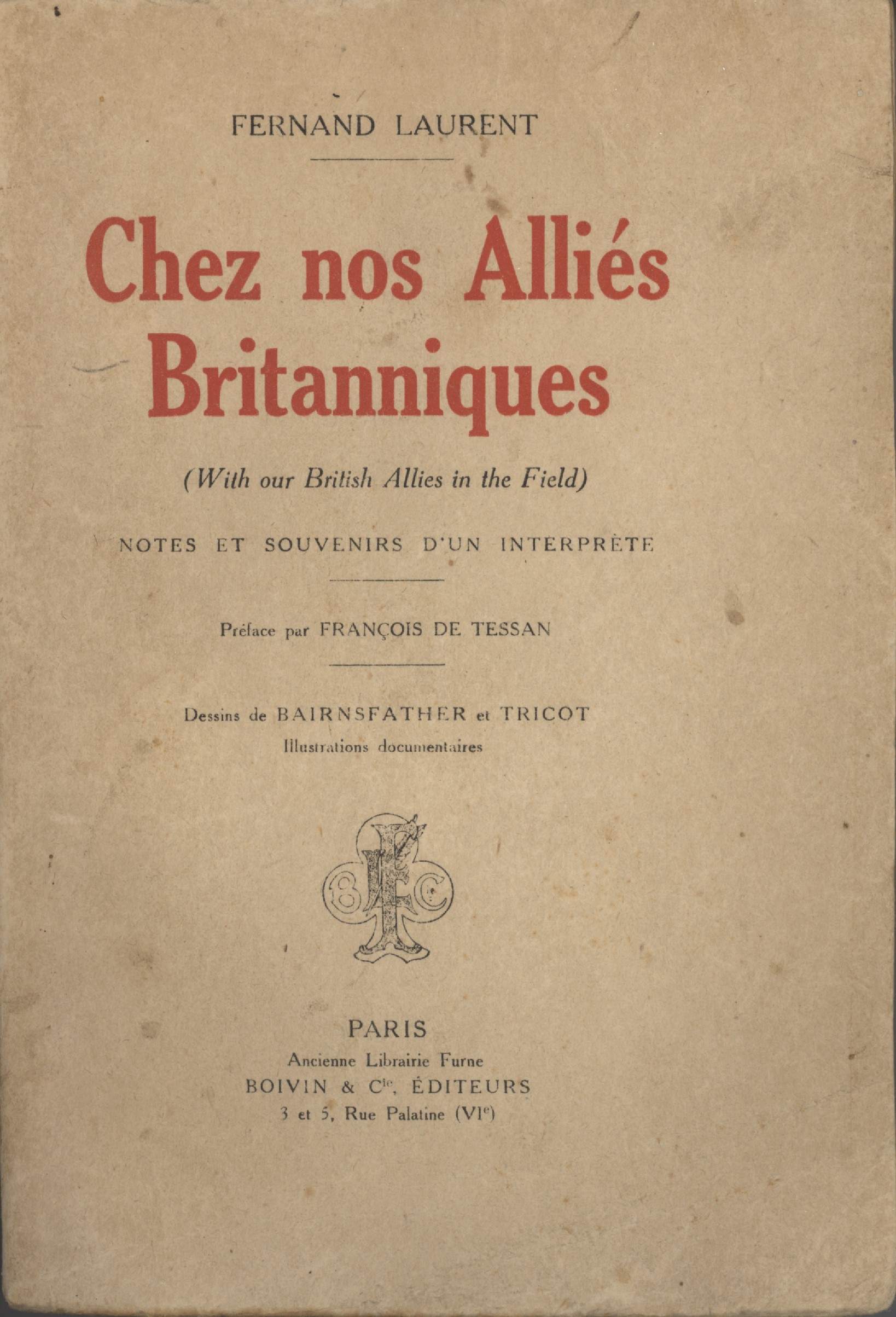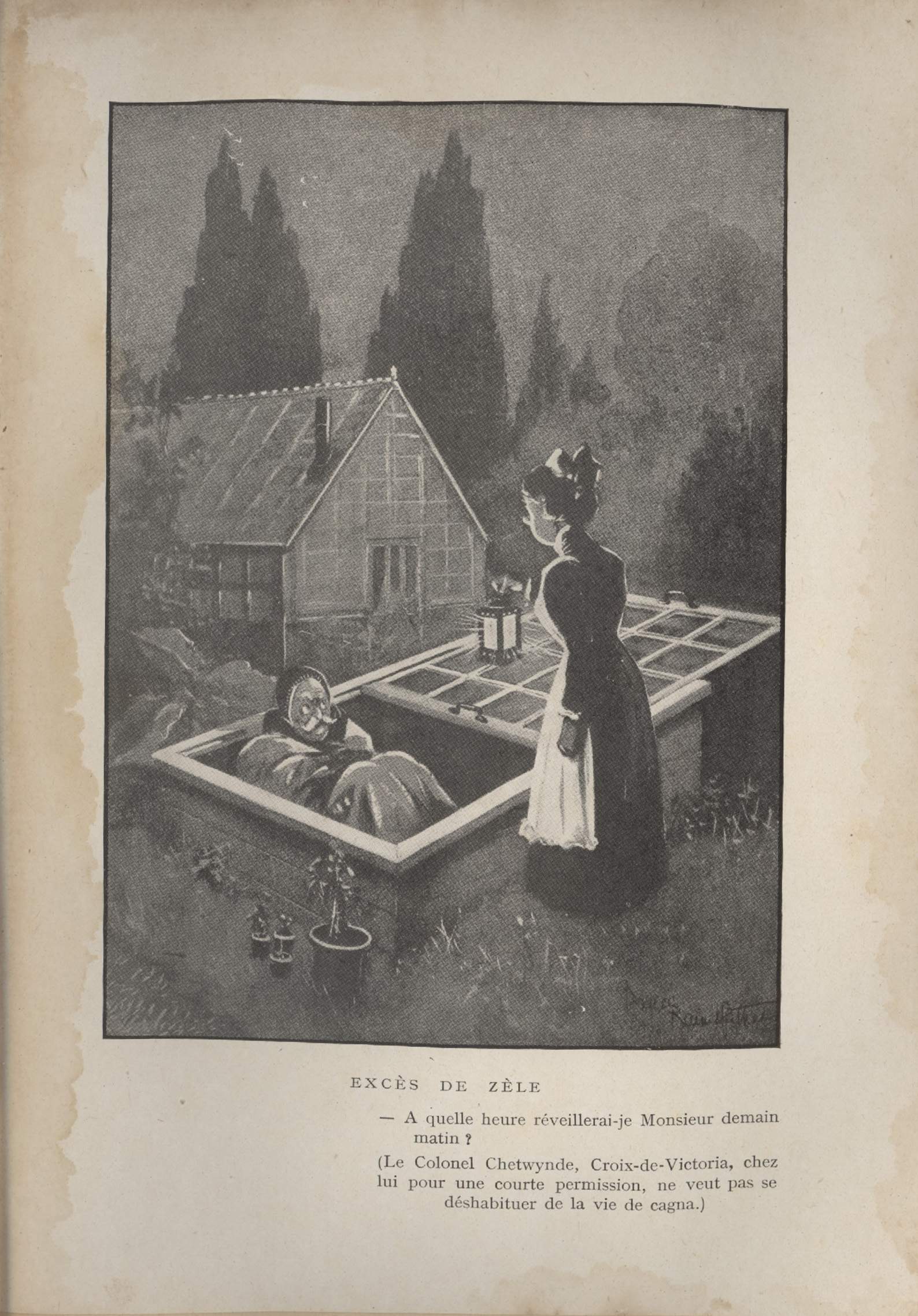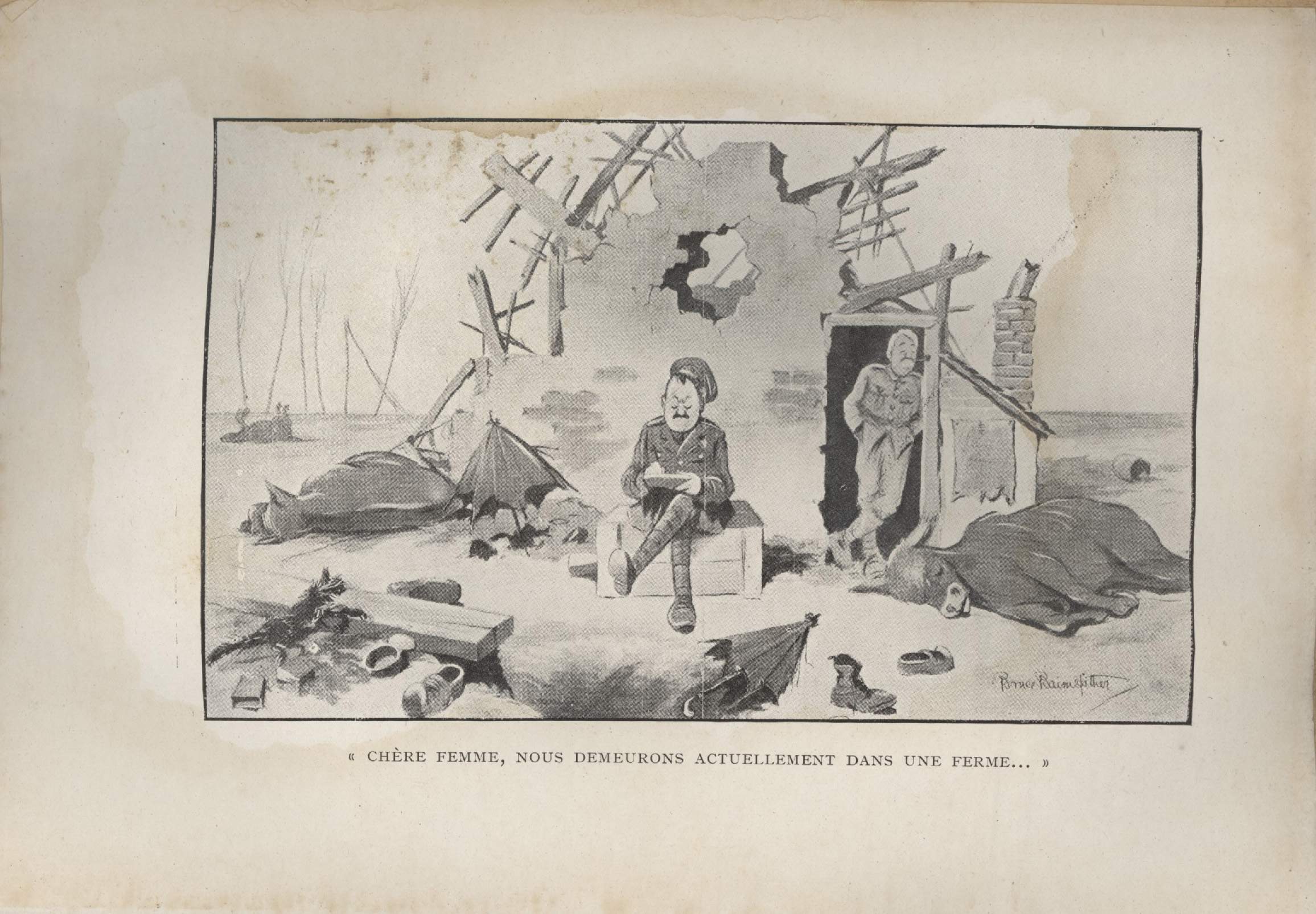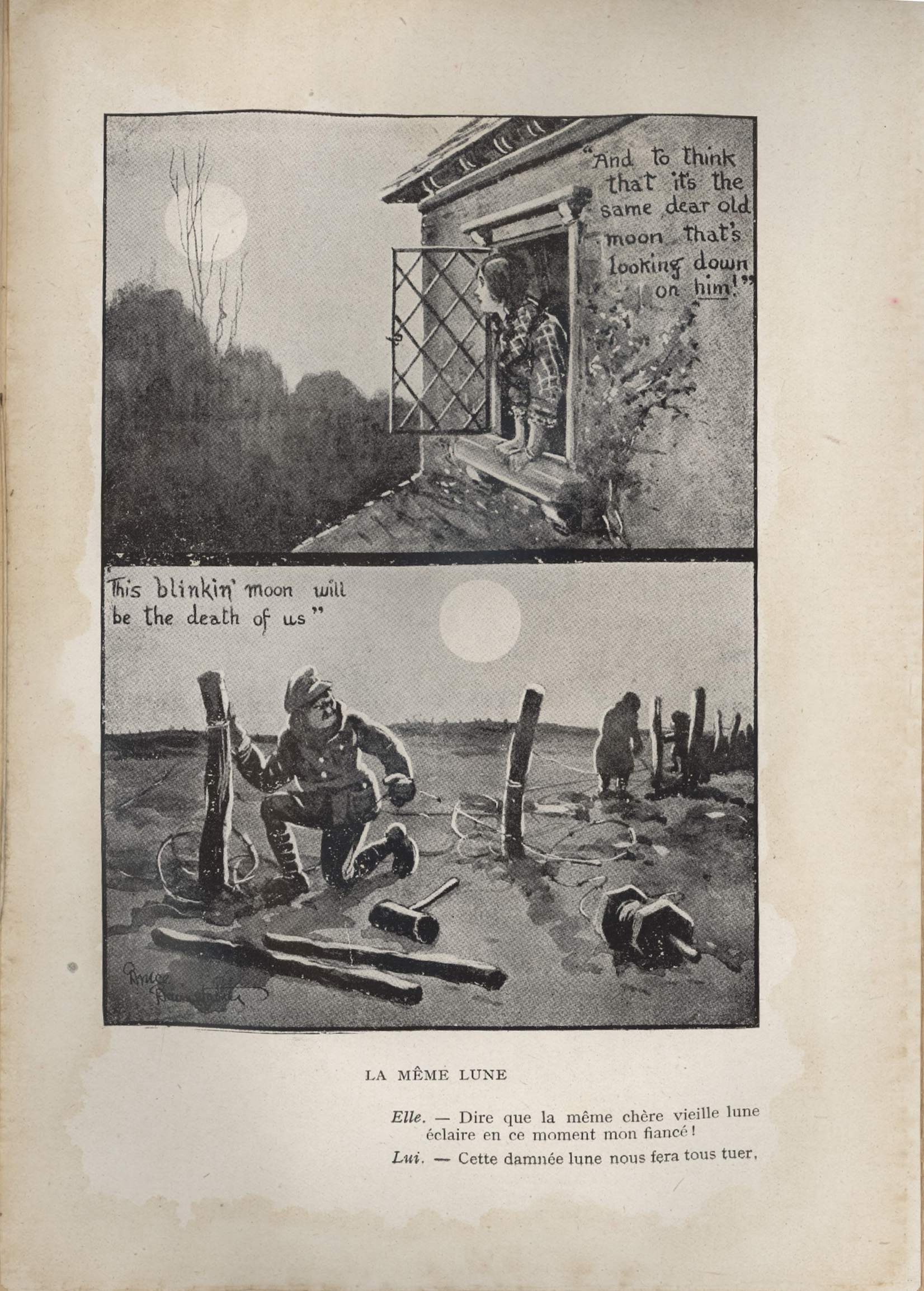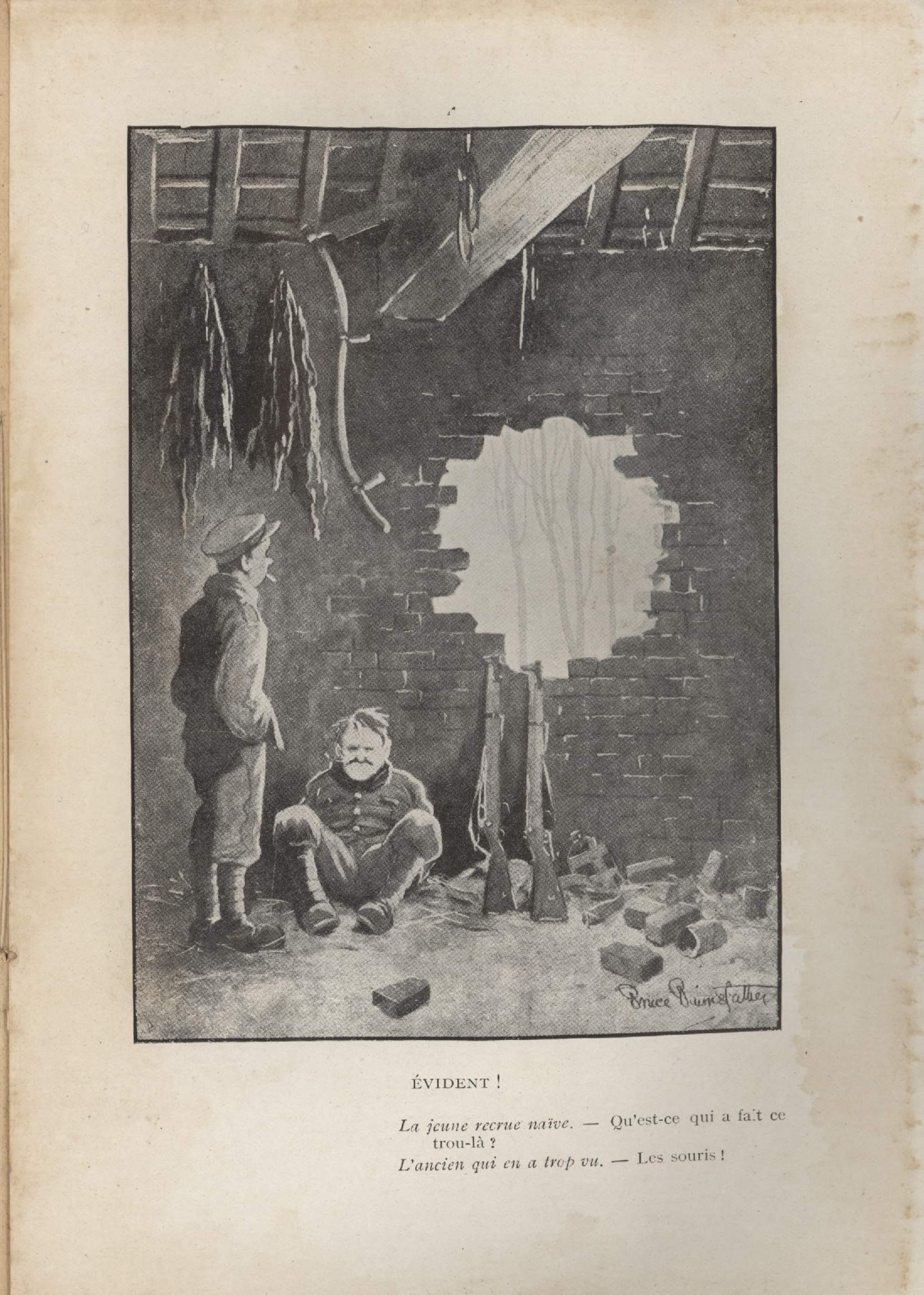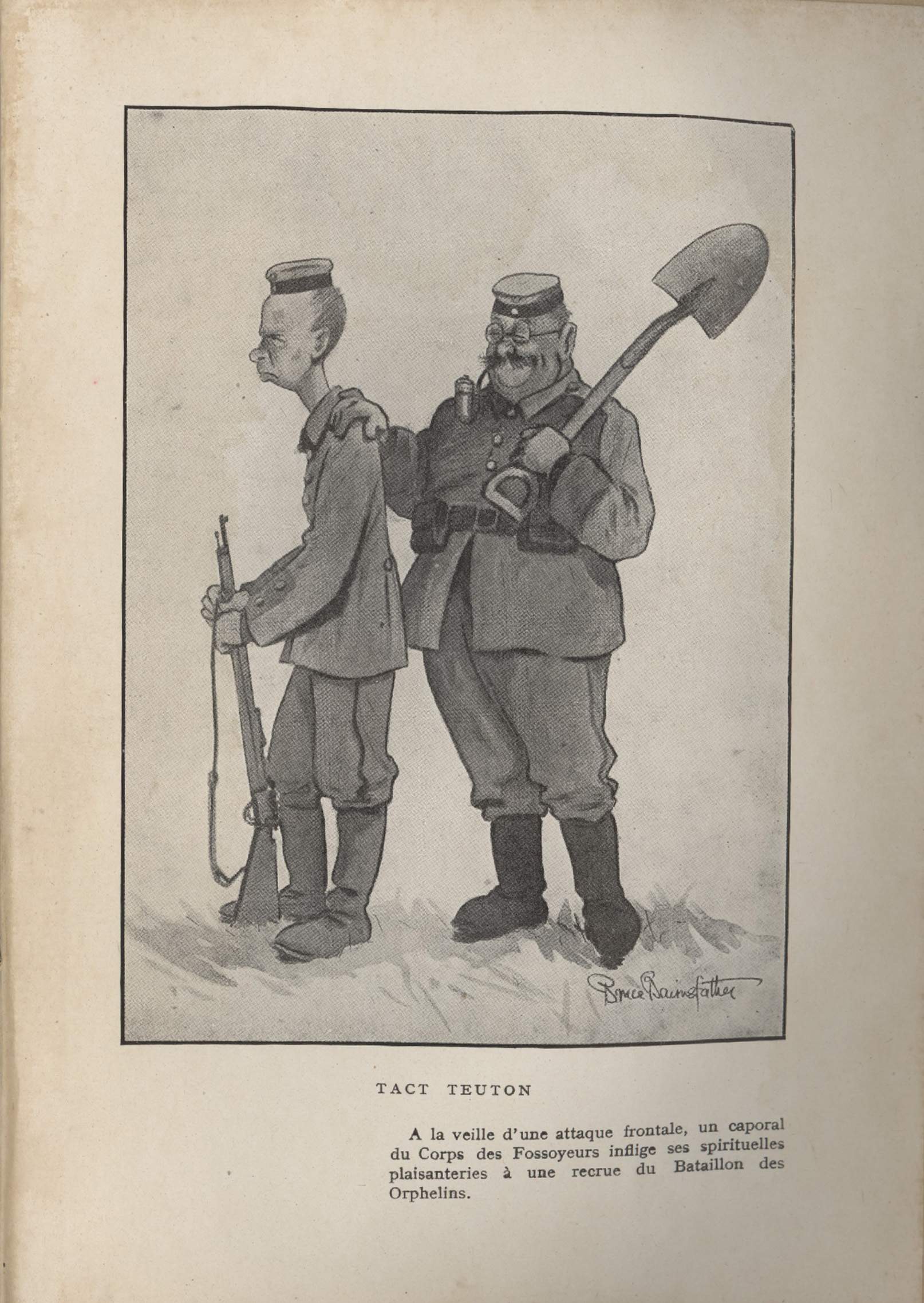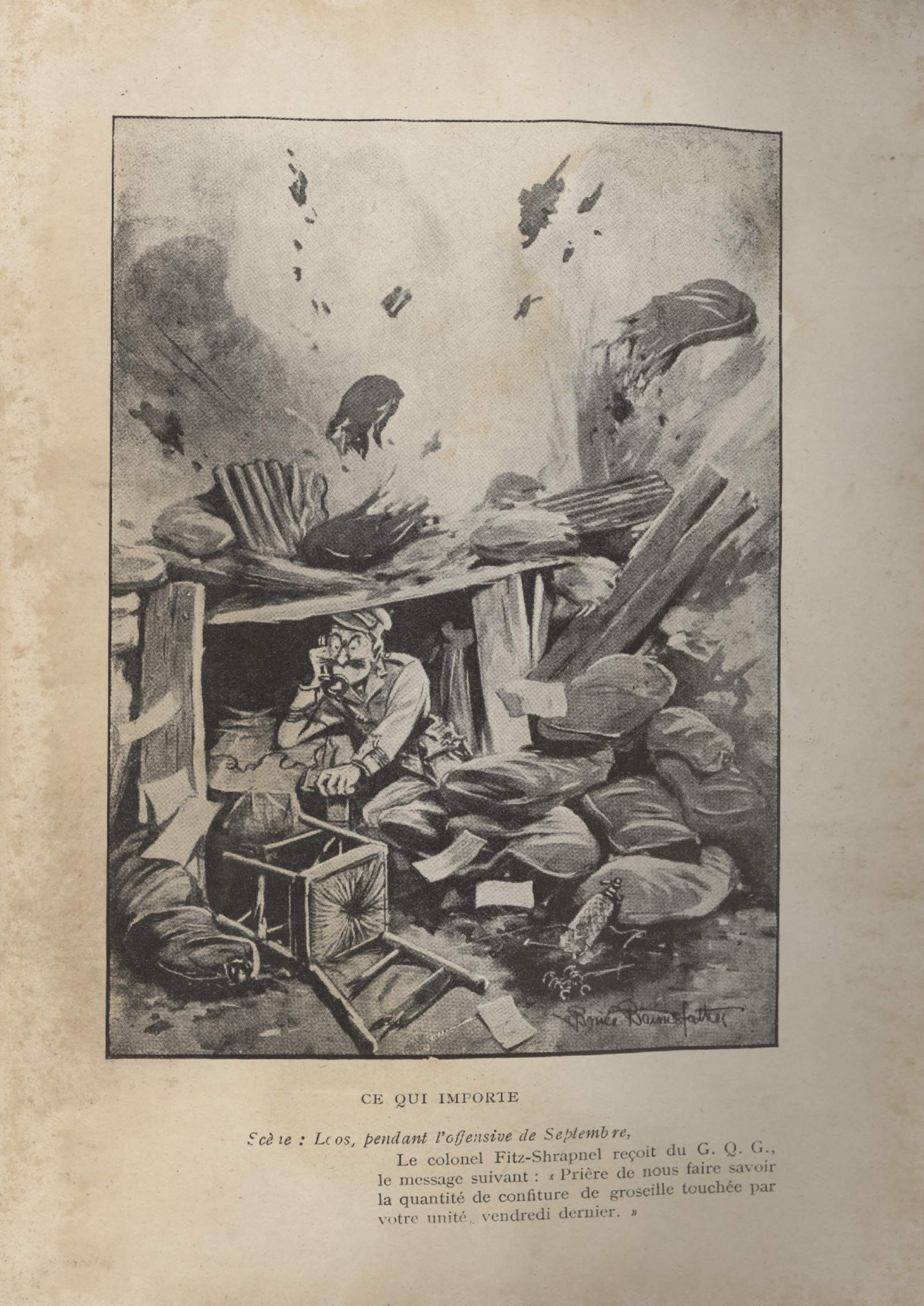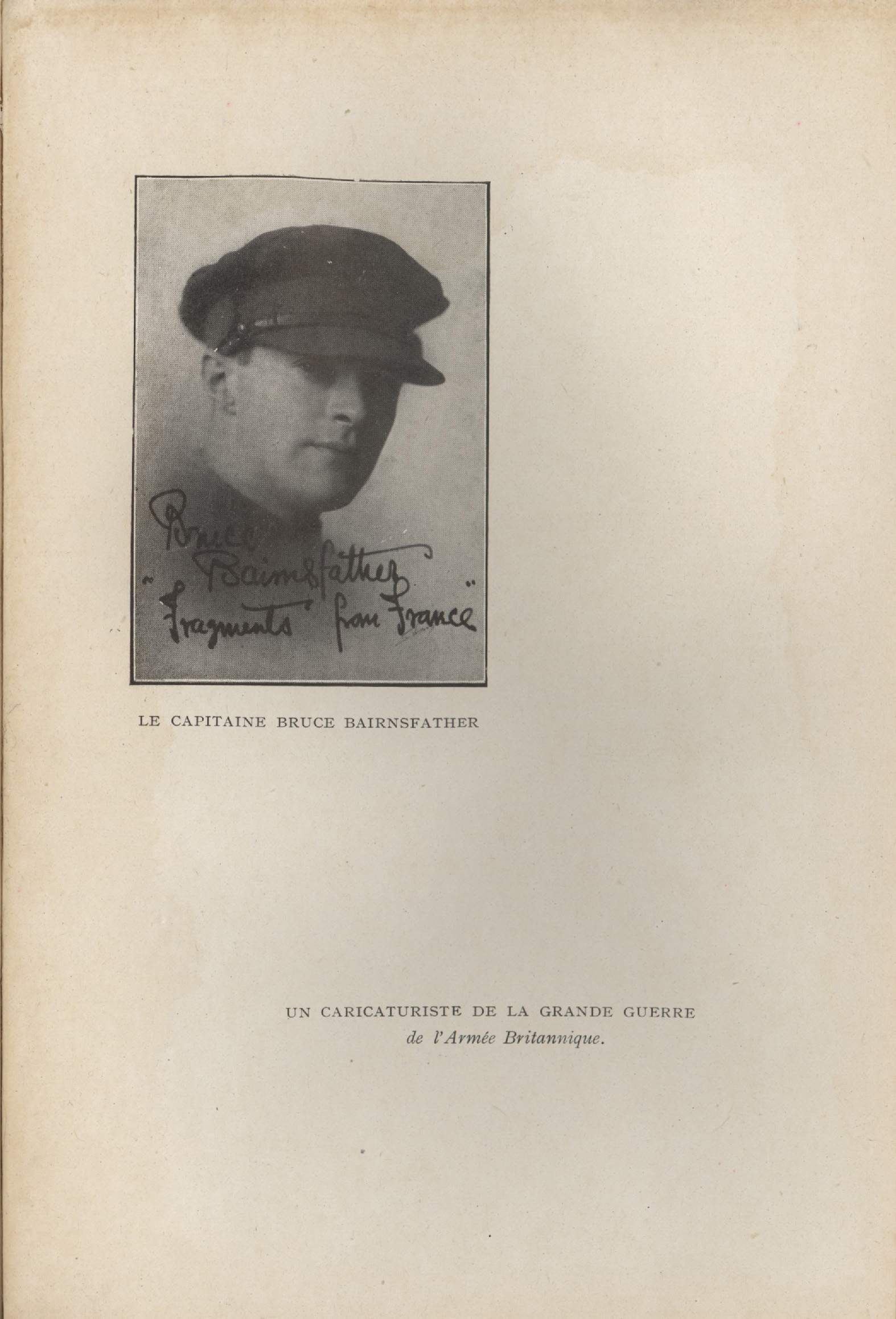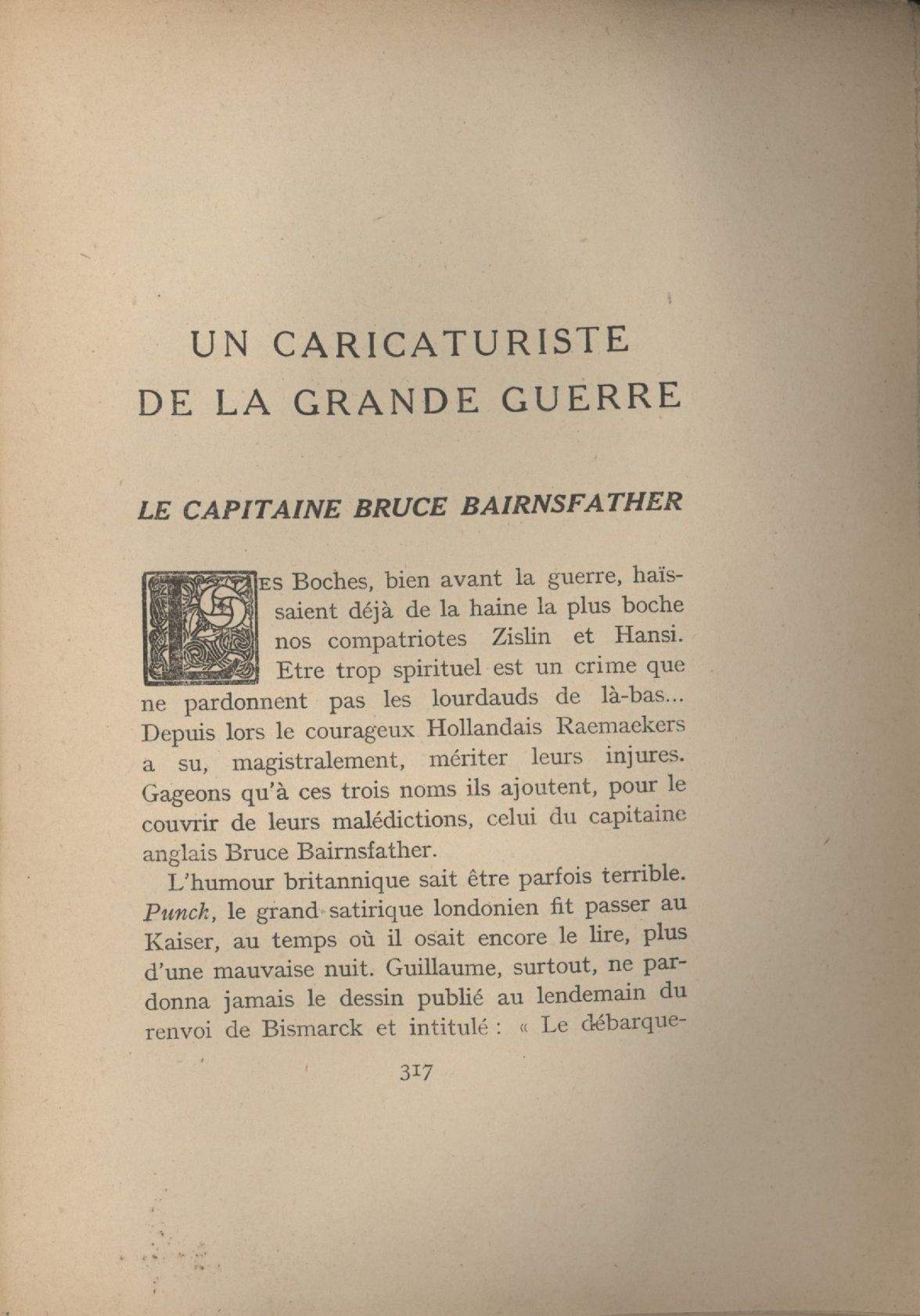Chez Nos Allies Britanniques
Chez Nos Alliés Britanniques (With our British Allies in the Field) was published in Paris by Boivin and Co, in the latter half of 1917. The author of the 352-page paperback volume was a French interpreter attached to the British Army, and it’s twenty-seven chapters contained his observations on a variety of subjects, including: Mobilisation; La Nouvelle Armée; Les Officiers; Les Tommies; Les Nurses; Les Mascottes; Quelques Corps Originaux (including sections on the ANZAC forces and Artists Rifles); Une visite à Ypres; and Christmas. Of foremost interest to Bairnsfather enthusiasts is Un Caricaturiste de la Grand Guerre—a nine-page appreciation of Bruce Bairnsfather and his work, by Fernand Laurent, which commences on page 317. There are also six Fragments from France cartoons (with captions in French) used as illustrations throughout the book:
Dear _____, We are at present staying at a farm (appeared opposite page 152); The Same Old Moon (opp. page 184); Thoroughness (opp. page 240); So Obvious (opp. page 328); The Tactless Teuton (opp. page 336) and The Things That Matter (opp. page 344).
A signed portrait of Bruce Bairnsfather was also used in the book.
In his Foreword to Chez Nos Alliés Britanniques, Fernand Laurent declared his intention to recall “the most picturesque memories of life in the ranks of Kitchener’s Army.” He conceded that to meet the requirements of the Censor he had “omitted all strategic details, all actual numbers or units and even the most frequent dates or localities” and that as a result “several of the descriptions will seem very commonplace and dull.” Despite this the book appears to contain some excellent sections on all aspects of life in the British Army, and is illustrated with some superb photographs and line drawings.
In his appreciation of Bairnsfather, Fernand Laurent writes how “the appearance of ‘The Bairnsfather’ each week is a highlight of life at the Front. It is anticipated eagerly and on its arrival, seen in all the Messes, accompanied by roars of laughter. From one end to the other of the long British line, today they decorate the damp walls of the dugouts, the wooden walls of the barracks, the offices behind the lines and the headquarters of the commanding generals.”
Laurent acknowledges that “the great, the rare quality of these cartoons is that they have all been drawn at the Front...That which he draws in his sketches is what he sees every day, his men, his superiors, and his comrades, the Boches in the trenches opposite. They are stamped with truth, which makes those who see them say ‘That’s it!’”
He observes that Bairnsfather’s drawings are “so representative of life on the Allied Front that it is impossible to speak of the British Army without thinking of them. Ranked among the best caricatures of the Great War, they are destined to survive it, because any single one of them, is enough, tomorrow, to bring to the mind of anyone from Kitchener’s Army, all the legion of unforgettable memories.”
Laurent tells how Bairnsfather’s first cartoons “were not published in The Bystander. They remain fixed, a few hundred yards from the Boche trenches, on the ruined walls of a Flemish farmhouse, which, for many long months, sheltered the Captain...All the walls left standing are, today, covered with his sketches.” He surmises that “this is a chance for American collectors!”
The chapter closes with Laurent alluding to Bairnsfather’s forthcoming visit to the French Army: “A particularly happy event has occurred between the War Office and the French Ministry of War...the painter of ‘Tommies’ will visit our Front, will study our ‘Poilus,’ will live in their quarters, and record, in black and white, his comic impressions.”
Chez Nos Alliés Britanniques, written entirely in the French language, it is a must for all serious Bairnsfather bibliophiles intending to build up a complete library of his published works.
